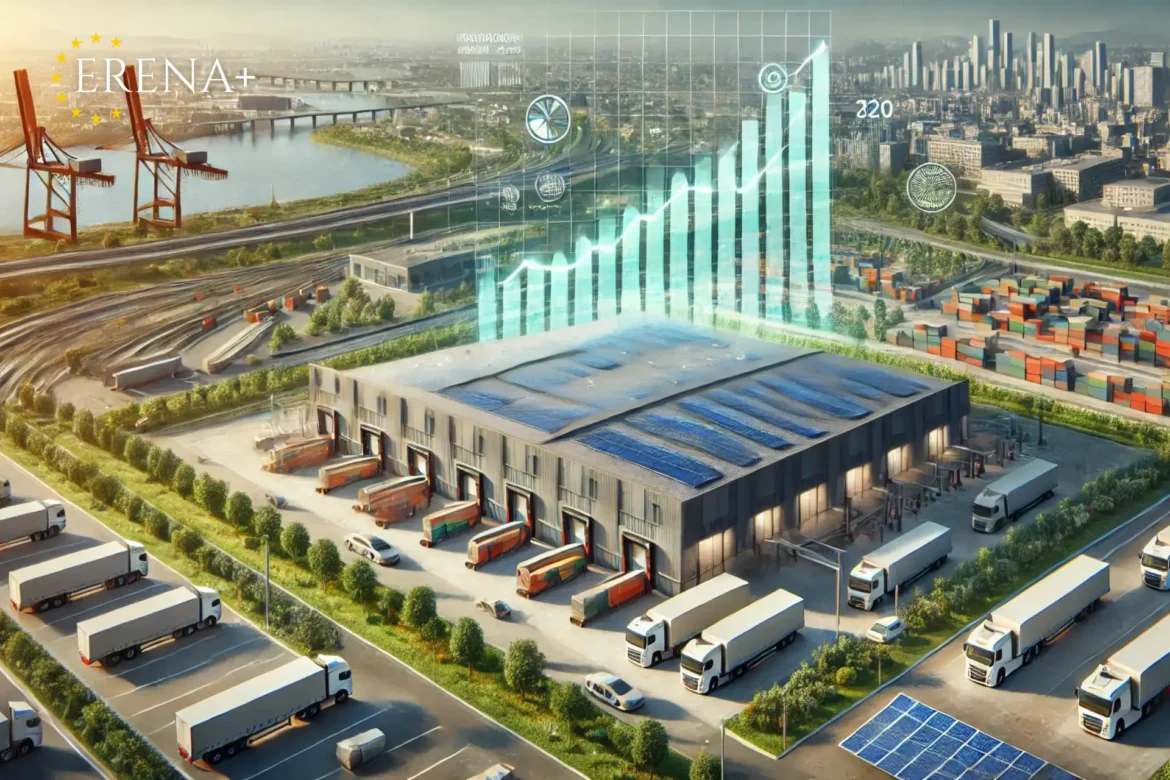In recent years, logistics real estate has become one of the most sought-after and dynamic asset classes in Europe. Fueled by the rapid expansion of e-commerce, shifting supply chain strategies, and changing consumer demands, this sector is now a prime focus for both investors and developers. In 2023, the total transaction volume in Europe’s logistics real estate market reached an all-time high of €64 billion, highlighting its significant growth.
Key Factors Driving Growth
The E-commerce Surge
The explosive growth of e-commerce is a primary factor behind the increasing demand for logistics real estate. According to Eurostat, online retail sales in Europe have grown by more than 50% since 2019, with total e-commerce sales exceeding €700 billion in 2023. To meet consumers’ rising expectations for faster delivery, retailers and third-party logistics providers are competing to secure strategically located warehouses and distribution centers. As a result, prime logistics assets across major European markets now have historically low vacancy rates, averaging just 3%.
Nearshoring and Supply Chain Transformation
The disruptions caused by the COVID-19 pandemic and global geopolitical tensions have prompted companies to rethink their supply chains. Nearshoring—relocating production closer to consumer markets—has gained popularity. This trend has driven demand for logistics facilities near urban hubs and major transport routes. For example, Germany, Europe’s largest logistics market, recorded more than 1,500 logistics real estate transactions in 2023, with hotspots in cities like Frankfurt, Hamburg, and Munich.
Sustainability Requirements
Sustainability is another crucial factor shaping the logistics real estate landscape. Both investors and tenants are prioritizing eco-friendly buildings with energy-efficient features, renewable energy systems, and certifications like BREEAM or LEED. According to CBRE, approximately 40% of new logistics developments in Europe in 2023 adhered to green building standards, underscoring the sector’s commitment to environmental responsibility.
Major Markets and Emerging Regions
Germany: The Logistics Leader
Germany remains the anchor of Europe’s logistics real estate market. In 2023, the country accounted for almost €15 billion in transactions, securing its position as the region’s largest market. Locations such as the Ruhr region and Berlin have seen soaring demand, with rental rates climbing 8% year-on-year.
The UK: Post-Brexit Stability
Despite the uncertainties surrounding Brexit, the UK continues to be a key player in logistics real estate. Transaction volumes in 2023 totaled €12 billion, driven by significant investments in areas like the Midlands and the South East. The growing popularity of grocery delivery services and rapid fulfillment centers has further bolstered demand.
Rising Stars: Poland and the Czech Republic
Eastern Europe is emerging as an investment hotspot for logistics real estate. Poland, in particular, recorded a 20% increase in investments in 2023, reaching €6 billion. With its strategic location as a link between Western Europe and Asia and its competitive labor costs, Poland is becoming increasingly attractive. Similarly, the Czech Republic has experienced robust activity, with logistics vacancy rates in Prague falling below 2%.
Challenges Facing the Sector
While the growth potential of Europe’s logistics real estate market is immense, several challenges remain:
• Land Availability: Suitable land near urban areas is scarce, driving up costs and complicating development. For instance, land prices for logistics use near Paris rose by 15% in 2023.
• Regulatory Complexity: Strict zoning regulations and environmental laws can lead to significant delays in project approvals. In Italy, securing permits for logistics facilities now takes an average of 18 months.
• Rising Costs: Inflation and higher construction costs are affecting project profitability. Construction costs for logistics properties in Europe increased by an average of 7% in 2023.
Technology Shaping the Future
Technological advancements are transforming the logistics real estate sector. Automated storage and retrieval systems (AS/RS), robotics, and IoT-enabled facilities are becoming standard. These innovations enhance efficiency and appeal to tenants looking for cutting-edge solutions. For instance, Prologis reported that 60% of its newly leased properties in 2023 featured advanced automation technologies.
Future Outlook
The future of logistics real estate in Europe looks promising, with analysts forecasting an 8% compound annual growth rate (CAGR) through 2027. Key trends likely to shape the sector include:
1. Urban Logistics: The demand for same-day delivery is driving the growth of urban logistics hubs and micro-fulfillment centers within cities.
2. Sustainability Advancements: Renewable energy integration, carbon-neutral buildings, and circular economy practices will gain more importance.
3. Growth in Emerging Markets: Countries such as Romania and Hungary offer untapped potential for logistics investments.
4. Market Consolidation: Larger players will likely pursue mergers and acquisitions to expand portfolios, while smaller firms may seek exit opportunities.
Conclusion
Logistics real estate has solidified its position as a rapidly growing asset class in Europe. With transaction volumes at record highs and strong fundamentals underpinning the sector’s expansion, it presents attractive opportunities for investors. However, addressing challenges like land scarcity, regulatory barriers, and rising costs will require strategic planning and innovation. As e-commerce continues to flourish and supply chains adapt to new realities, logistics real estate is set to remain a cornerstone of Europe’s economic framework.
Logistics Real Estate: The Rising Star Asset Class in Europe
614
previous post

